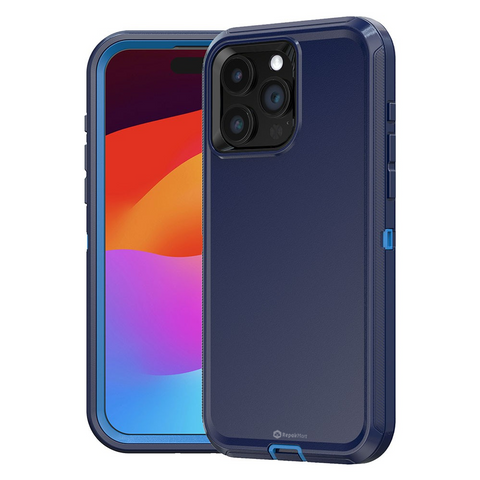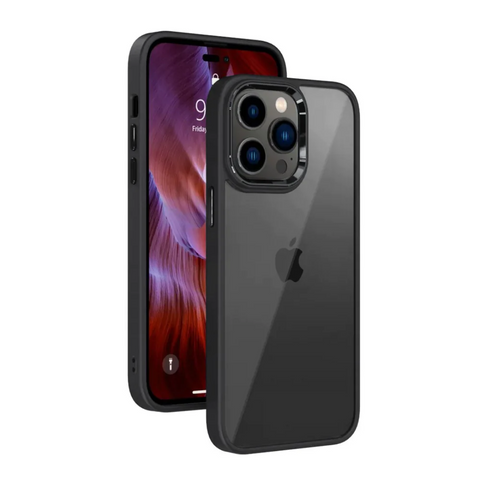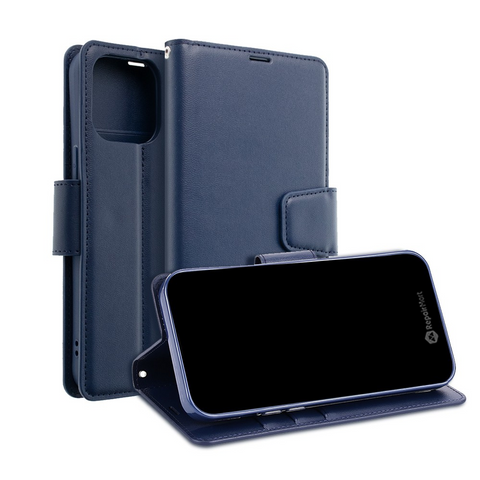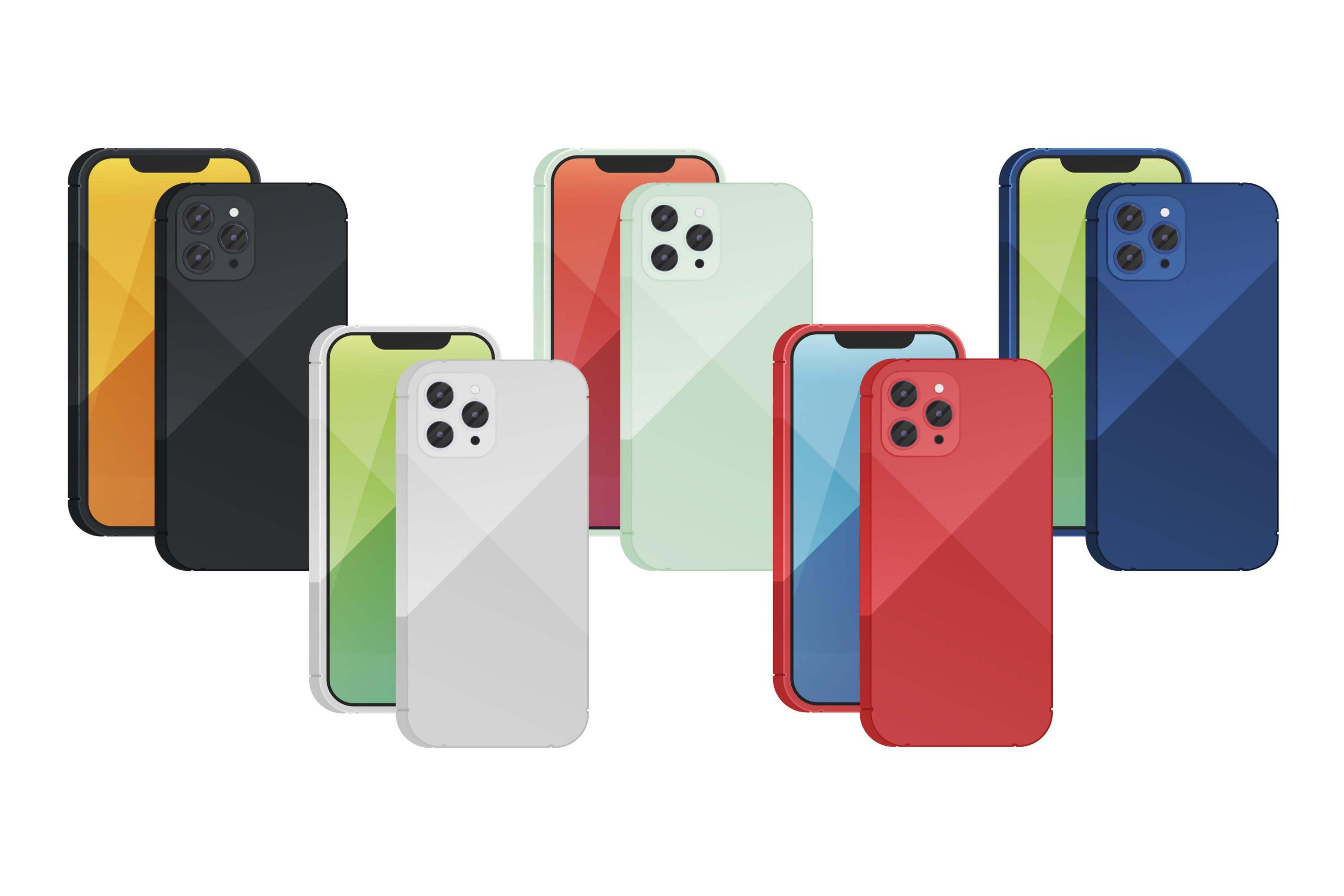Is your smartphone constantly overheating? And is your phone case to blame, or is something wrong internally? Well, your phone case may not be the root of the problem, but it’s possible that it’s making things worse. We’re going to explore the mechanics of excess heat, which components are to blame, and phone cases play a role in overheating. Then, you’ll learn a few ways that you can prevent overheating, like adjusting your device settings and regularly updating software to the latest version. So, whether you're an iPhone, Galaxy, or Pixel user, you’ll walk away with valuable insights to help you maximise your phone's performance and longevity. Let’s get right to the most important question...
Do Phone Case Cause Overheating?
While phone cases are not the primary cause of overheating, they can contribute to the problem by trapping heat. Plastic, rubber, and silicone cases, for example, retain more heat compared to materials like wood. Battery cases and waterproof cases, though convenient, can also contribute to heat buildup around your phone.

To ensure your phone remains cool, it is advisable to avoid plastic, rubber, and silicone cases. Instead, consider opting for materials like wood that do not retain as much heat and allow for better airflow. At Carved, we offer a range of unique phone cases made from high-quality wood, specifically designed to promote proper heat dissipation without compromising style or protection.
Additionally, it is crucial to select the right size phone case for your device. Ill-fitting cases can impede proper airflow, exacerbating the issue of heat buildup.
Understanding the Causes Of Phone Case Overheating
When it comes to the overheating of phone cases, several factors come into play. One of the foremost culprits is often battery-related issues. If a smartphone's battery is defective or damaged, it can generate excessive heat during charging cycles or regular usage, which can then transfer to the phone case, exacerbating the problem. Moreover, environmental conditions can significantly contribute to overheating. For instance, subjecting the phone to high ambient temperatures or leaving it exposed to direct sunlight for prolonged periods can cause the case to absorb and retain heat, further intensifying the issue.
In addition to these external factors, certain usage patterns and habits can also play a significant role in causing phone case overheating. Running resource-intensive applications or engaging in heavy multitasking can strain the phone's components, leading to increased heat production and, consequently, warming up the phone case.
By understanding these underlying causes of phone case overheating, users can take proactive measures to mitigate the risk and ensure optimal performance and longevity of their devices.
Materials Used in Phone Cases and Their Heat Conductivity
The material composition of phone cases plays a crucial role in determining their ability to dissipate heat generated by the device. Different materials exhibit varying levels of heat conductivity, which directly affects how effectively heat is transferred away from the phone's components.
Silicone Cases: Silicone is a common material used in phone cases due to its flexibility and shock-absorbing properties. However, silicone tends to have low heat conductivity, meaning it may trap heat rather than dissipate it efficiently.

Plastic Cases: Plastic cases, such as polycarbonate or TPU (thermoplastic polyurethane), often offer better heat conductivity than silicone. They can help to dissipate heat more effectively, reducing the risk of overheating.

Metal Cases: Metal cases, like aluminum or stainless steel, are excellent conductors of heat. While they provide superior heat dissipation, they may also transfer external heat to the phone more readily, potentially exacerbating overheating in certain conditions.

Leather Cases: Leather is another material used in phone cases, appreciated for its durability and aesthetic appeal. However, leather typically has moderate heat conductivity, which may not offer as much thermal management as plastic or metal cases.

Hybrid Cases: Some phone cases combine multiple materials for enhanced protection and heat dissipation. For example, a case with a plastic shell and a silicone inner layer may offer a balance between impact resistance and heat conductivity.

Find out your favourite mobile phone cases, screen protectors, power and more accessories from our largest collection of phone accessories online shop.
Impact of Phone Case Thickness on Heat Dissipation
The thickness of a phone case can significantly influence its ability to dissipate heat. Thicker cases may provide more insulation, trapping heat inside, while thinner cases might allow for better airflow and heat transfer.
Thin Cases: Slim or thin phone cases generally allow for better heat dissipation as they minimise the barrier between the phone and its surroundings. Heat can escape more easily, reducing the risk of overheating during prolonged use or intensive tasks.
Thick Cases: On the other hand, thicker cases may impede heat dissipation by creating a layer of insulation around the phone. While thicker cases offer increased protection against impacts, they can also contribute to heat buildup, especially in conjunction with other factors like high ambient temperatures or heavy usage.
Ventilation Design: Some thicker cases incorporate ventilation features such as perforations or raised ridges to facilitate airflow and enhance heat dissipation. These design elements aim to strike a balance between protection and thermal management.
Usage Considerations: When selecting a phone case based on thickness, it's essential to consider the phone's usage patterns and environmental conditions. Users in hot climates or those who frequently engage in resource-intensive tasks may benefit from thinner cases to prevent overheating.
Phone Case Design and Its Effect on Airflow for Cooling
The design of a phone case plays a crucial role in determining the airflow around the device, which directly impacts its cooling efficiency. Factors such as the presence of vents, cutouts, and overall case structure can influence airflow dynamics.
Vented Cases: Some phone cases feature strategically placed vents or perforations to promote airflow around the phone's critical components. These vents allow hot air to escape while drawing in cooler air from the surrounding environment, aiding in heat dissipation.
Cutouts for Ports: Well-designed phone cases include precise cutouts for ports, speakers, and other openings, ensuring unobstructed airflow and preventing heat buildup around these areas. Cases with poorly aligned or covered ports may hinder airflow and contribute to overheating.
Raised Edges and Ridges: Raised edges or ridges on the back of a phone case can create channels for airflow, facilitating heat dispersion away from the device's surface. These design elements help prevent the formation of heat pockets between the phone and the case.
Mesh Inserts: Some advanced phone cases incorporate mesh inserts or breathable materials into their design to enhance airflow without compromising protection. These inserts act as conduits for air circulation, promoting efficient cooling while maintaining structural integrity.
Impact on Aesthetics: While prioritising airflow and cooling, phone case designers must also consider aesthetic factors to ensure a balance between functionality and visual appeal. Sleek and modern designs can incorporate airflow-enhancing features without sacrificing style.
Therefore, the choice of materials, thickness, and design features in a phone case can significantly impact its ability to dissipate heat effectively. By understanding these factors and selecting a well-designed case suited to their needs, users can help mitigate the risk of overheating and ensure optimal performance and longevity for their devices.
Phone Overheating Risks Associated with Certain Phone Case Styles
Different styles of phone cases offer varying levels of protection and functionality, but they can also impact the device's temperature regulation. Understanding the potential overheating risks associated with specific case styles, such as rugged or wallet cases, is essential for maintaining optimal performance and safety of your phone.
Rugged Cases
Rugged cases are designed to provide superior protection against drops, shocks, and other impacts. While their robust construction can safeguard your phone from physical damage, it may also hinder heat dissipation. Rugged cases often feature thick layers of shock-absorbing materials, which can act as insulation, trapping heat generated by the device. As a result, prolonged usage or intensive tasks may lead to increased temperatures within the phone, potentially causing overheating issues.
Wallet Cases
Wallet cases are popular for their convenience, offering storage space for credit cards, IDs, and cash alongside phone protection. However, the added functionality of wallet cases comes with its own set of overheating risks. The extra layers of material required to accommodate card slots and compartments can impede airflow around the phone, limiting heat dissipation. Additionally, carrying bulky items like cards or cash in close proximity to the phone can exacerbate heat buildup, especially if the case lacks adequate ventilation or thermal management features.
Protective Layers and Insulation
Both rugged and wallet cases often incorporate multiple layers of materials, such as silicone, plastic, or leather, to enhance durability and protection. While these layers shield the phone from external damage, they can also create barriers to heat dissipation. Thick padding and cushioning intended to absorb impacts may inadvertently trap heat, particularly during extended use or when the phone is subjected to demanding tasks like gaming or video streaming.
Usage Considerations
When using rugged or wallet cases, it's essential to monitor the phone's temperature regularly, especially during prolonged or intensive usage sessions. Users should be mindful of environmental factors such as ambient temperature and humidity, as well as their own usage habits, to prevent overheating. If the phone feels excessively hot to the touch or exhibits signs of thermal throttling, such as performance slowdowns or unexpected shutdowns, it may be necessary to remove the case temporarily to allow for better heat dissipation.
Mitigation Strategies
To mitigate overheating risks associated with rugged or wallet cases, consider the following strategies:
- Opt for cases with ventilation features, such as perforations or raised ridges, to promote airflow and heat dissipation.
- Choose thinner and lighter case options that provide adequate protection without sacrificing thermal management.
- Limit the number of items stored in wallet cases to prevent overcrowding and obstruction of airflow.
- Take regular breaks during intensive phone usage to allow the device to cool down naturally.
- Consider using phone cooling accessories, such as external fans or cooling pads, to supplement thermal management efforts.
By understanding the overheating risks associated with specific phone case styles and implementing appropriate mitigation strategies, users can maintain optimal performance and safety for their devices.
Influence of Phone Case Color on Heat Absorption
The color of a phone case may seem like a purely aesthetic consideration, but it can also have significant implications for the device's temperature regulation. Different colors absorb and reflect light and heat differently, which can impact the phone's overall thermal management.
Dark Colors
Dark-colored phone cases, such as black or navy blue, tend to absorb more light and heat compared to lighter shades. This increased absorption can lead to higher temperatures within the case, especially when exposed to direct sunlight or other heat sources. As a result, phones encased in dark-colored cases may be more prone to overheating, particularly during outdoor use or in warm environments.
Light Colors
In contrast, light-colored phone cases, such as white or pastel hues, reflect more light and heat, helping to keep the device cooler under similar conditions. Light-colored cases are less likely to absorb as much solar radiation, reducing the risk of overheating and thermal stress on the phone's internal components. Additionally, lighter shades can help mitigate the effects of heat buildup during prolonged usage or intensive tasks.
Thermal Properties
The influence of phone case color on heat absorption is primarily attributed to the material properties of the case itself. Certain materials, such as silicone or plastic, may inherently exhibit higher or lower thermal conductivity, regardless of color. However, the color of the case can still affect its surface temperature and the amount of heat transferred to the phone.
Environmental Factors
While the color of a phone case plays a role in heat absorption, it's essential to consider environmental factors that may exacerbate overheating risks. Direct sunlight, high ambient temperatures, and poor ventilation can all contribute to heat buildup within the phone case, regardless of its color. Users should be mindful of these factors and take precautions to prevent excessive temperature increases, such as avoiding prolonged exposure to sunlight or using reflective surfaces to deflect heat.
User Preferences and Considerations
When selecting a phone case based on color, users should weigh their aesthetic preferences against practical considerations related to thermal management. While dark-colored cases may offer a sleek and stylish appearance, they may also pose higher overheating risks, particularly in warmer climates or during outdoor activities. Conversely, light-colored cases may provide better thermal regulation but may be more prone to visible dirt and discoloration over time.
In conclusion, the color of a phone case can influence its heat absorption properties and, consequently, the device's overall thermal management. Users should consider environmental factors, material properties, and personal preferences when choosing a phone case color to ensure optimal performance and safety for their devices.
Compatibility of Phone Cases with Phone Cooling Systems
Phone cooling systems, such as thermal management software and heat dissipation mechanisms, play a crucial role in maintaining optimal operating temperatures for mobile devices. However, the compatibility of phone cases with these cooling systems can impact their effectiveness and may pose challenges for thermal regulation.
Thermal Management Software
Many modern smartphones feature built-in thermal management software designed to monitor and regulate the device's temperature. These software algorithms adjust CPU performance, screen brightness, and other parameters dynamically to prevent overheating and thermal throttling. However, thick or insulating phone cases can interfere with the effectiveness of these software-based solutions by trapping heat generated by the device.
Heat Dissipation Mechanisms
Some smartphones incorporate specialised heat dissipation mechanisms, such as vapor chambers, graphite heat spreaders, or copper heat pipes, to facilitate heat transfer away from critical components. These advanced cooling technologies help dissipate heat more efficiently, allowing the device to maintain optimal performance under demanding conditions. However, the presence of a phone case can inhibit the effectiveness of these mechanisms by creating additional layers of insulation or obstructing airflow around the phone.
Case Design Considerations
When designing phone cases, manufacturers must consider compatibility with the device's cooling systems to ensure optimal thermal management. Thin and lightweight cases that allow for unimpeded airflow and heat dissipation are generally more compatible with advanced cooling technologies. Cases with strategically placed ventilation features, such as perforations or raised ridges, can help mitigate overheating risks without compromising protection.
User Experience
For users, compatibility between phone cases and cooling systems is essential for maintaining consistent performance and preventing thermal-related issues. Incompatible cases that restrict airflow or inhibit heat dissipation may lead to thermal throttling, decreased battery life, and potential long-term damage to the device's internal components. To optimise user experience, manufacturers should prioritise compatibility testing and design phone cases that complement rather than hinder the device's cooling capabilities.
Customisation and Personalisation
While phone cases offer an opportunity for customisation and personalisation, users should be mindful of the potential impact on thermal management. Thick or heavily padded cases may offer enhanced protection but can also compromise compatibility with cooling systems, especially in high-performance smartphones designed for intensive tasks like gaming or video editing. When selecting custom or designer cases, users should prioritise functionality and compatibility alongside aesthetics to ensure optimal device performance.
In conclusion, the compatibility of phone cases with phone cooling systems is a critical consideration for maintaining optimal thermal management and device performance. Manufacturers, designers, and users alike should prioritise compatibility testing and design choices that facilitate airflow, heat dissipation, and efficient thermal regulation. By selecting compatible cases and implementing best practices for thermal management, users can maximise the lifespan and performance of their mobile devices while expressing their personal style.
Implications of overheating phones
Overheating phones can have several implications, ranging from immediate performance issues to long-term damage to the device and potential safety hazards. Understanding these implications is essential for users to take appropriate measures to prevent overheating and mitigate its effects. Here are some key implications of overheating phones:
Performance Degradation
When a phone overheats, its performance can degrade significantly. The device may experience slowdowns, lags, or freezes as the CPU throttles its processing power to reduce heat generation. This can result in a frustrating user experience, especially during demanding tasks like gaming or multitasking.
Battery Drain
Overheating can accelerate the depletion of the phone's battery, reducing its overall lifespan. High temperatures can cause chemical reactions within the battery cells, leading to accelerated degradation and capacity loss over time. In extreme cases, overheating can even cause the battery to swell or leak, posing a safety risk.
System Instability
Overheating can destabilise the phone's operating system and cause unexpected crashes or reboots. Excessive heat can disrupt the normal functioning of internal components, leading to software glitches or hardware failures. This instability can result in data loss, corrupted files, or even permanent damage to the device.
Reduced Lifespan
Prolonged exposure to high temperatures can shorten the lifespan of a phone's internal components. Overheating can cause thermal expansion and contraction, leading to stress on solder joints, connectors, and other critical parts. This wear and tear can eventually lead to component failure and the need for costly repairs or replacement.
Safety Hazards
Overheating phones pose potential safety hazards to users. In extreme cases, overheating can cause the device to emit smoke, catch fire, or even explode. Lithium-ion batteries, commonly used in smartphones, are particularly prone to thermal runaway when exposed to high temperatures, presenting a serious risk of burns, property damage, or personal injury.
Health Concerns
In addition to safety hazards, overheating phones can also pose health risks to users. Prolonged exposure to high temperatures from a phone can cause discomfort, skin irritation, or even burns, particularly if the device is in close contact with the body for extended periods.
Impact on Device Warranty
Overheating-related damage may void the manufacturer's warranty on the phone. Most warranties exclude damage caused by misuse, neglect, or environmental factors, including overheating. Users may be responsible for covering the cost of repairs or replacement if the device is found to have been damaged due to overheating.
In summary, overheating phones can have significant implications for performance, battery life, safety, and user experience. To mitigate the risks associated with overheating, users should take preventive measures such as avoiding prolonged exposure to high temperatures, using phone cases with adequate ventilation, and monitoring the device's temperature regularly. If overheating issues persist, users should seek professional assistance to diagnose and address the underlying causes.
How to Prevent Your Phone from Overheating
Preventing your phone from overheating is essential to maintain its performance, prolong its lifespan, and ensure user safety. Here are several effective tips to help you prevent your phone from overheating
Avoid Direct Sunlight: Exposure to direct sunlight can significantly increase your phone's temperature. Avoid leaving your phone in direct sunlight for extended periods, especially when charging or using demanding apps.
Remove Phone Case: Phone cases, especially thick or insulating ones, can trap heat and hinder airflow around your device. Remove the case when charging or during intensive usage to allow for better heat dissipation.
Limit Background Apps: Running multiple apps simultaneously can strain your phone's processor, leading to increased heat generation. Close unused apps and limit background processes to reduce the workload on your device.
Optimize Display Settings: High screen brightness levels can contribute to heat buildup, especially on AMOLED displays. Lower the screen brightness and use adaptive brightness settings to reduce energy consumption and heat generation.
Avoid Overcharging: Overcharging your phone's battery can cause it to heat up unnecessarily. Disconnect the charger once your phone reaches full charge to prevent overcharging and minimise heat generation.
Use Official Chargers: Using non-certified or third-party chargers can pose a risk of overheating and damage to your phone's battery and charging circuitry. Stick to official chargers and cables provided by the manufacturer to ensure compatibility and safety.
Turn Off Unused Features: Disable features such as Bluetooth, Wi-Fi, and GPS when not in use to reduce battery drain and heat generation. These wireless radios can continuously search for signals, leading to increased power consumption and heat buildup.
Update Software: Ensure your phone's operating system and apps are up to date with the latest software updates. Manufacturers often release updates to optimise performance, improve battery efficiency, and address potential overheating issues.
Monitor Temperature: Use built-in system monitoring tools or third-party apps to monitor your phone's temperature regularly. If your phone feels excessively hot to the touch or exhibits signs of overheating, take immediate action to cool it down and identify the cause.
Allow for Airflow: Avoid covering the phone's vents or obstructing airflow around the device, especially during charging. Place your phone on a flat, hard surface to allow for adequate airflow and heat dissipation.
Use Battery-Saving Mode: Activate battery-saving modes or power-saving features on your phone to reduce CPU usage and conserve energy. These modes can help prevent overheating by limiting background processes and optimising performance.
In conclusion, preventing your phone from overheating is crucial for maintaining its performance, prolonging its lifespan, and ensuring user safety. By implementing the aforementioned tips, such as avoiding direct sunlight, removing phone cases during intensive usage, limiting background apps, and using official chargers, you can significantly reduce the risk of overheating and its associated implications.
Additionally, monitoring your phone's temperature regularly and taking immediate action to cool it down when necessary can help prevent overheating-related issues. To determine the appropriate size phone case for your Apple iPhone, Samsung Galaxy, or Google Pixel, refer to our compatibility guides. By practicing these preventive measures, you can enjoy a smoother and more reliable smartphone experience while safeguarding your device against the damaging effects of overheating.
Let Repair Mart enhance your device's safety and performance with high-quality accessories. Explore a wide range of must-have items like robust wireless chargers, ultra-thin hydrogel screen protectors, and versatile adapters. Each product is carefully selected to ensure it meets the highest standards, providing durability and efficiency for your smartphone.
With Repair Mart, you can confidently upgrade your device with accessories that not only protect but also improve its functionality. Whether it's a premium screen protector that enhances touch sensitivity or a fast-charging adapter that keeps you powered up, everything you need is available in one place.


